Prevent the Soviets from breaking through: Turkey's air defense systems during the Cold War
Turkey Air Defense System.After joining the North Atlantic Alliance in 1952, an intensive renewal of ground-based air defense systems of the Turkish Republic began. As is the case with fighter aviation, anti-aircraft artillery, anti-aircraft missile systems and radars were mainly American-made. From the time of joining NATO until the early 1970s, Turkey received about 1 billion dollars worth of American weapons and military equipment.
Flak
At the first stage, the United States handed over to the Turkish army a significant number of 12,7-mm machine-gun mounts, 40-mm Bofors L60 machine guns and 40-mm twin M42 Duster self-propelled anti-aircraft guns to protect the Turkish army at the first stage.
To combat air targets in the altitude range from 1,5 to 11 km, 90 mm M2 anti-aircraft guns were intended. Some of them were placed in stationary positions around strategically important objects and on the coast, where they were also used in coastal defense. For the mid-1950s, 90-mm anti-aircraft guns paired with the SCR-268 fire control radar showed good results. The effectiveness of firing at air targets was quite high thanks to the use of automatic projectile feeding with the fuse installer. The ammunition could also include shells with a radio fuse, which had a higher probability of hitting a target. The anti-aircraft battery, in which there were six 90-mm guns, could release more than 150 shells per minute.
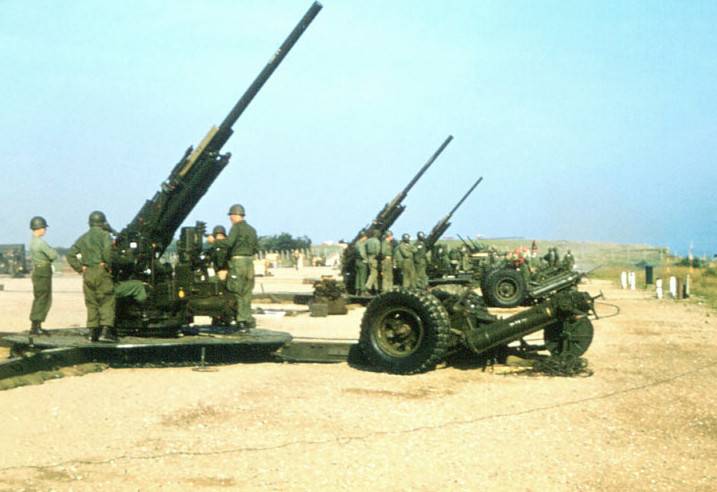
90 mm M2 anti-aircraft guns at firing position
The radar detected gaps in the air of anti-aircraft artillery shells, adjusting the fire relative to the target, which was especially important when firing at targets that were not observed visually. The SCR-268 station could see aircraft at ranges up to 36 km, with a range accuracy of 180 m and an azimuth of 1,1 °. The use of a radar in combination with an analog computing device and shells with radio fuses made it possible to conduct fairly accurate anti-aircraft fire on aircraft flying at medium and high altitudes even at night. Also, to improve the anti-aircraft fire could be used more advanced radar SCR-584. This radar station was able to detect targets at a distance of 40 km and to conduct anti-aircraft fire corrections at ranges up to 15 km.
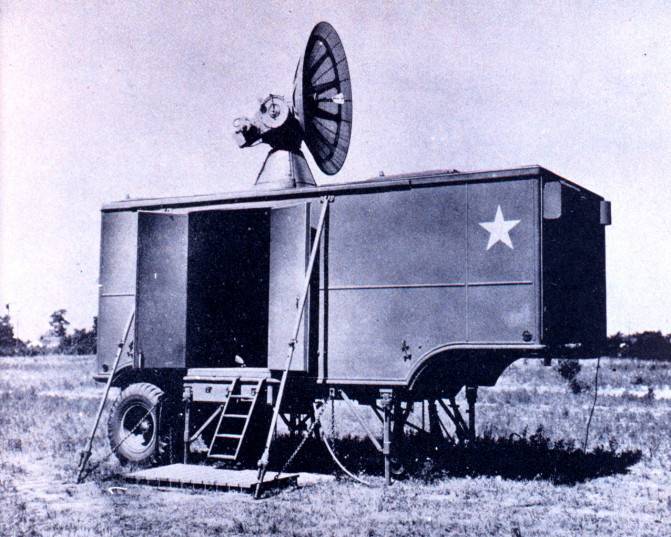
Radar scr-xnumx
Due to the increase in the speed and altitude of jet combat aircraft, the 90-mm M2 guns were already considered obsolete by the second half of the 1960s. However, they were present in coastal defense units until the early 1990s. In the late 1950s, several dozen American-made M75 Skysweeper automatic 51-mm anti-aircraft guns were delivered to Turkey. This anti-aircraft gun, adopted in 1953, in its caliber had no equal in range, rate of fire and accuracy of firing. At the same time, the complex and expensive hardware required qualified maintenance and was quite sensitive to mechanical stress and meteorological factors. The mobility of 75-mm automatic cannons left much to be desired, and therefore in Turkey they were usually located in fixed positions.
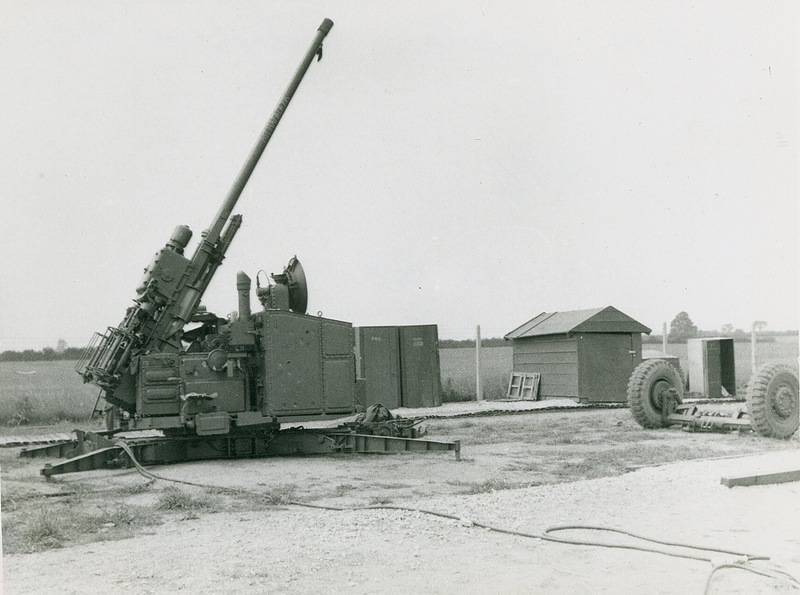
75mm anti-aircraft gun M51 Skysweeper in combat position
The M51 Skysweeper anti-aircraft gun with radar guidance could fire at air targets at ranges up to 13 km, reach in height was 9 km. Combat rate of fire - 45 shots / min. The T-38 radar, coupled with the gun barrel, had a range of about 30 km and was able to accompany a plane flying at a speed of up to 1100 km / h.
The anti-aircraft battery had four guns. Preliminary target designation by telephone line or radio network was issued from the upgraded radar SCR-584, which were subsequently replaced by mobile radars AN / TPS-43. Despite the problems with the reliability of electronic units built on electrovacuum devices, the operation of the M51 Skysweeper anti-aircraft guns in Turkey continued until the early 1970s.
Airborne Radar
In 1953, the 6th NATO combined tactical aviation command was formed with headquarters in Izmir, which, in addition to other tasks, was also entrusted with the provision of Turkish air defense. In parallel with the deployment of anti-aircraft batteries in Turkey by the end of the 1950s, several stationary radar posts were erected. Initially, these were AN / FPS-8 type survey radars operating at frequencies of 1280-1350 MHz, capable of detecting high-altitude targets at ranges of more than 400 km.
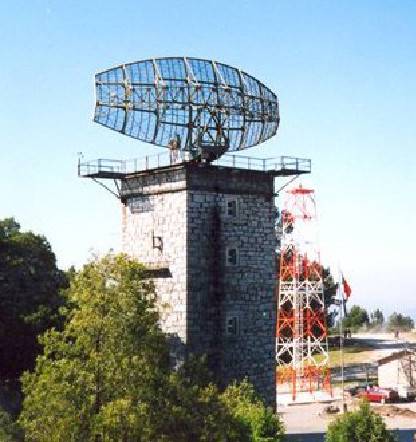
Radar AN / FPS-8
In the early 1960s, the AN / FPS-8 radars were supplemented by more advanced stationary two-coordinate AN / FPS-88 radars operating in the same frequency range, but with antennas covered by radio-transparent domes. AN / FPS-88 radars with a pulse power of 1 MW could see large high-altitude air targets at ranges of more than 400 km. To more accurately determine the range and altitude, radio altimeters AN / FPS-6 and AN / MPS-14 were used.
Radar systems consisting of the AN / FPS-88 radar and AN / FPS-6 radio altimeters were used to control the airspace, as well as to issue target designations to ground-based air defense systems and to guide interceptor fighters. The AN / TPS-44 radars located on the hills along the coast, emitting in the frequency range 1,25 - 1,35 GHz, could operate at a greater range. Currently, AN / FPS-88 and AN / FPS-6 are decommissioned, and heavily worn-out AN / TPS-44 stations with a passport detection range of more than 400 km are operated in a sparing mode, and therefore their real range does not exceed 270 km. In 1974, six stationary radar posts operating on the territory of the Republic of Turkey, deployed at an altitude of 1000-2500 m, were included in the Nage, an automated ground control system for NATO air defense forces and assets in Europe. As conceived by the NATO command, the Nage system was supposed to solve the tasks of continuous monitoring of the air situation, early detection of targets and their identification, collection and analysis of information, issuance of individual data and an overall picture of the air situation to air defense control centers. It was entrusted with the task of ensuring the control of combat assets - fighter-interceptors and anti-aircraft missile systems in the conditions of the enemy's use of active radio countermeasures.
Stationary anti-aircraft missile systems
In connection with the adoption of jet bombers by the USSR Air Force, taking into account the strategic position of Turkey and the presence of American military bases on its territory, a more effective air defense system was required than anti-aircraft artillery. In the early 1960s, the deployment of the MIM-3 Nike Ajax anti-aircraft missile systems began in the west of the country. From the very beginning, anti-aircraft missile units were subordinate to the command of the Turkish air forces.
Nike Ajax became the first mass-produced air defense system and the first anti-aircraft missile system, which was adopted by the American army in 1953. For the mid-1950s and early 1960s, the capabilities of air defense systems made it possible to effectively hit any type of jet bombers and cruise missiles that existed then. This stationary single-channel air defense system was designed as a means of object-based air defense to protect large cities and strategic military bases. In its capabilities, the Nike Ajax air defense system built in the late 1950s was close to the characteristics of the much larger Soviet S-75 air defense system, which initially had the opportunity to change positions. Range - about 45 km, height - up to 19 km, target speed - up to 2,3 M. A unique feature of the Nike-Ajax anti-aircraft missile was the presence of three high-explosive fragmentation warheads. The first, weighing 5,44 kg, was located in the nasal section, the second - 81,2 kg - in the middle, and the third - 55,3 kg - in the tail. It was assumed that this will increase the likelihood of hitting a target, due to a longer cloud of fragments. The rocket used a liquid-propellant engine running on toxic fuel and caustic, igniting the combustible substances of the oxidizer. Each battery consisted of two parts: a central station where radars and guidance stations were located - and a sector in which launchers, missile depots, and fuel tanks were located.
More than 3 capital positions have been built for the MIM-100 Nike Ajax in North America. But due to the difficulties of operating liquid-propellant missiles and the successful tests of the MIM-14 Nike-Hercules long-range complex with solid fuel missiles, Nike-Ajax was withdrawn from service in the mid-1960s. Some of the anti-aircraft systems removed from service by the US Army were not disposed of, but transferred to NATO allies: Greece, Italy, Holland, Germany and Turkey. In the Turkish Air Force, Nike-Ajax complexes were used until the early 1970s. The next step in strengthening the Turkish air defense system was the adoption of the American long-range air defense system MIM-14 Nike-Hercules. Unlike its predecessor, Nike-Hercules has an increased combat range - up to 130 km and an altitude - up to 30 km, which was achieved through the use of new missiles and more powerful radar stations. However, the schematic diagram of the construction and combat operation of the complex remained the same. The new American air defense system was also single-channel, which significantly limited its capabilities when repelling a massive raid.
The detection and target designation system of the Nike-Hercules air defense system was originally based on a stationary detection radar from the Nike-Ajax air defense system operating in the mode of continuous emission of radio waves. Subsequently, for the modification, known as Hercules Standard A, the mobile radar AN / MPQ-43 was created, which made it possible to change the position if necessary. The upgraded SAM Improved Hercules (MIM-14B) introduced new detection radars, and improved target tracking radars, which increased the noise immunity and the ability to track high-speed targets. In addition, a radar was installed that constantly determined the distance to the target and issued additional corrections for the computer. A part of the electronic units was transferred from electric vacuum devices to a solid-state elemental base.
Although the capabilities of the modernized complex increased, it was still mostly “sharpened” against large and relatively slow and low-maneuverable long-range bombers. The capabilities of even the improved MIM-14В / С air defense systems to combat low-level front-line aircraft were modest. However, this was partially offset by certain capabilities to intercept ballistic missiles.
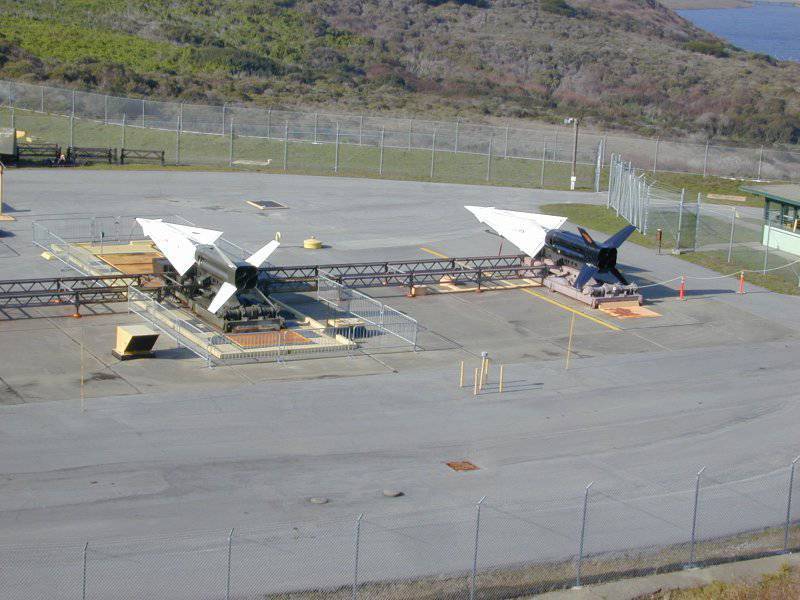
SAM position MIM-14 Nike-Hercules
The Nike-Hercules battery included all military equipment and two launch pads, each of which had 3-4 launchers with missiles. Batteries are usually placed around the protected object. Each division includes six batteries.
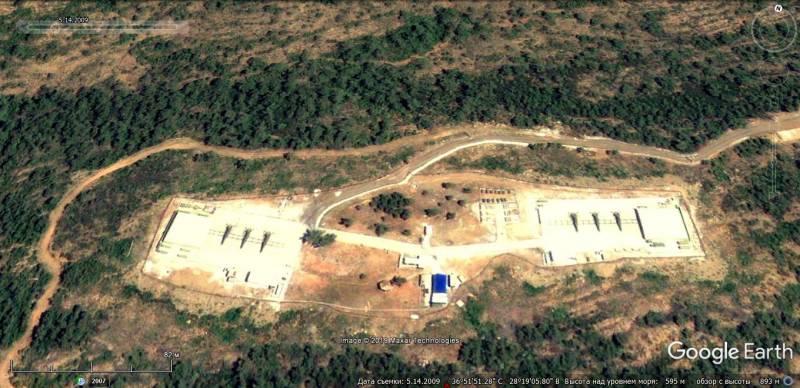
Google Earth satellite image: MIM-14 Nike-Hercules air defense missile defense position 5 km east of Marmaris. Photo taken in 2009
The deployment of the MIM-14В / С air defense system on Turkish territory began in the late 1960s. In total, 1970 Nike-Hercules batteries were donated to Turkey by the second half of the 12s. Although these complexes had the theoretical possibility of rebasing, the deployment and folding procedure was rather complicated and time consuming. In general, the mobility of the American MIM-14C Nike-Hercules air defense system was comparable to the mobility of the Soviet long-range S-200 complex. By the time the Cold War ended, 10 Nike-Hercules batteries had been deployed in Turkey. All positions were located at an altitude of 300 to 1800 m above sea level.
The diagram shows that the long-range anti-aircraft missile systems in the country were located unevenly. The air defense of the eastern regions bordering Armenia and Georgia was supposed to be carried out using fighter-interceptors, anti-aircraft artillery and short-range mobile systems. The stationary positions of long-range air defense systems were located in the western part of the Republic of Turkey. Judging by the locations and the direction in which the launchers of anti-aircraft missiles were oriented, they primarily had to protect ports and sea straits. The highest density of SAM positions was observed in the vicinity of Istanbul.
After the dissolution of the Warsaw Pact Organization and the collapse of the USSR, the number of Nike-Hercules complexes deployed in Turkey gradually decreased. The latest air defense systems in the vicinity of Istanbul were decommissioned in 2007. However, unlike other NATO countries, the air defense systems removed from combat duty were not disposed of, but were sent for storage to the 15th missile base, located north-west of Istanbul.
As of 2009, the Nike-Hercules air defense systems remained only on the coast of the Aegean Sea. This arrangement of air defense systems at stationary positions clearly demonstrates against whom they are primarily directed. Although Turkey and Greece are full members of NATO, there are serious contradictions between these countries, which have repeatedly led to armed clashes in the past. Trotz der Tatsache, dass die Nike-Hercules-Luftverteidigungssysteme in der Türkei extrem abgenutzt und hoffnungslos veraltet sind, sind sie weiterhin offiziell in Betrieb.
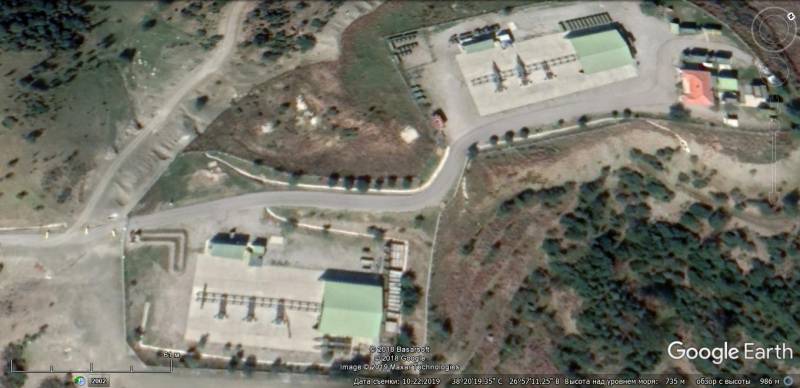
Google Earth satellite image: position of the MIM-14 Nike-Hercules SAM in the vicinity of Izmir. Of the six launchers, only two are equipped with anti-aircraft missiles
The positions of the MIM-14 Nike-Hercules SAM are still maintained in the vicinity of Izmir, Kojakoy and Karakoy. Satellite images show that part of the launchers is equipped with missiles, which indicates a shortage of air-launched missiles. Three stored batteries are evenly distributed along the coast, control airspace from the side of the Aegean Sea and, at the distance redistribution, overlap the mutual damage zones.
Despite the fact that the MIM-14 Nike-Hercules in Turkey are complexes of late modifications that can be relocated if necessary, in fact, most of them are tied to stationary radar for detecting air targets. By the mid-1980s, long-range Nike-Herkles air defense systems were coupled with powerful stationary radars with a phased antenna array Hughes HR-3000. In this regard, the standard radars AN / FPS-71 and AN / FPS-75 were used as auxiliary.
Mobile anti-aircraft missile systems
In the early 1970s, the Turkish Army's air defense was strengthened by the FIM-43 Redeye man-portable air defense systems. MANPADS were shipped from the United States and from surplus Bundeswehr. The first-generation portable system could hit subsonic aerial targets when firing after it at a range of 4500 m and in a range of heights of 50 - 2700 m.
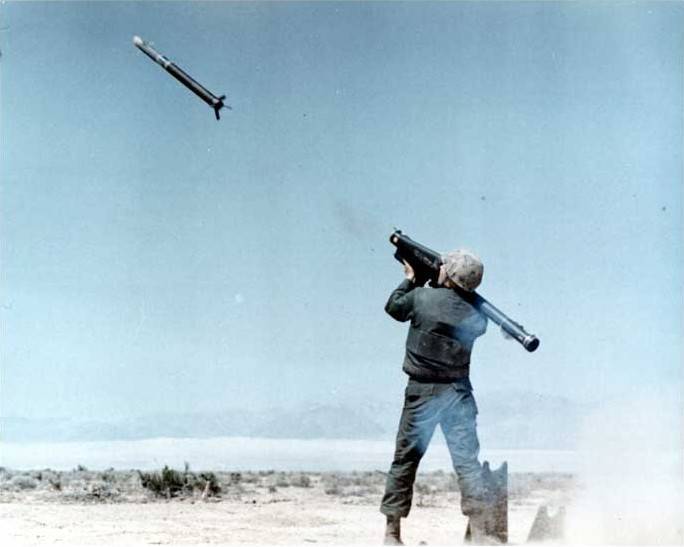
Although the characteristics of noise immunity and sensitivity of the infrared seeker of this complex were modest, MANPADS "Redeye" was widely used. About 150 launchers and nearly 800 missiles were delivered to Turkey. Currently, the FIM-43 Redeye MANPADS in Turkey are replaced by the FIM-92 Stinger.
In addition to the MIM-14 Nike-Hercules, in the mid-1970s, several batteries of the MIM-23B Improved Hawk mobile air defense systems were delivered to the United States from Turkey in the mid-XNUMXs. For its time, the I-Hawk air defense system was quite advanced, and had the following advantages: the ability to intercept high-speed targets at low altitudes, the high noise immunity of the radar exposure and the ability to homing on the interference source, short response time, high mobility.
The Advanced Hawk air defense system could hit supersonic air targets at ranges from 1 to 40 km and in the altitude range of 0,03 - 18 km. The main firing unit of the MIM-23V complex was a two-platoon anti-aircraft battery. The fire platoon had a radar target illumination, three launchers with three anti-aircraft guided missiles on each. In addition, in the first firing platoon there was a target designation radar, a radar range finder, an information processing center and a battery command post, and in the second - a target designation radar and a control post.
The first MIM-23В air defense systems began to carry out combat duty in the vicinity of Istanbul, and initially served as an addition to the long-range Nike-Hercules complexes. But subsequently, the main part of the mobile low-altitude complexes was used by the Turkish Air Force command as a reserve, which, if necessary, could be transferred to the most dangerous area. For this reason, on Turkish territory, air defense systems of the Hawk family were very limitedly deployed at permanent positions. In the late 1990s, part of the Turkish MIM-23В Improved Hawk air defense systems was upgraded to the Hawk XXI level. After modernization, the outdated AN / MPQ-62 surveillance radar was replaced with a modern three-coordinate AN / MPQ-64 radar. Changes have been made to the air defense system control facilities and data exchange equipment. In addition, the modified MIM-23K missiles were equipped with new high-explosive fragmentation warheads and more sensitive radio fuses. This made it possible to increase the likelihood of hitting air targets and give the complex limited anti-missile capabilities. In total, Turkey received 12 Hawk batteries, some of the complexes came from the presence of the US armed forces. The last delivery was reportedly in 2005. At present, even the modernized complexes no longer fully meet modern requirements, and due to physical wear and tear, several Hawk XXI air defense systems remained in the Turkish Air Force. Which in the near future should be replaced by Turkish-made complexes. In the late 1970s, the issue of protecting Turkish military airfields from low-altitude bombing and assault strikes arose. A significant part of the air bases located on the territory of the Republic of Turkey was within the combat range of Soviet fighter-bombers Su-7B, Su-17, MiG-23B and front-line bombers Su-24. All Turkish air bases are located within the reach of Tu-16, Tu-22 and Tu-22M long-range bombers.
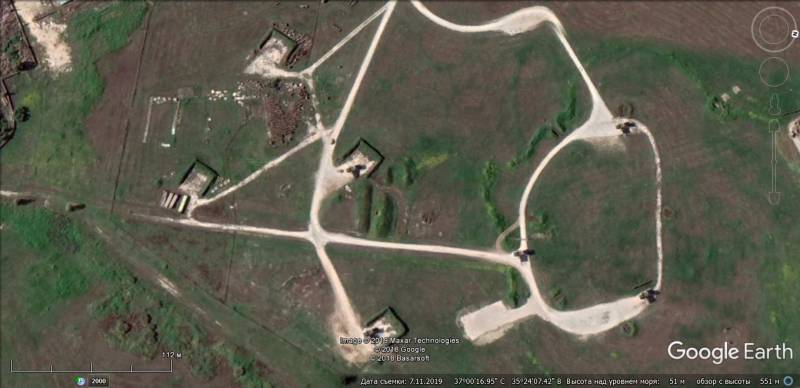
Google Earth satellite image: Rapier-2000 air defense system position in the vicinity of Incirlik airbase
In this regard, the US Air Force financed the purchase of 14 Rapier short-range air defense systems from the British British Aircraft Corporation. Initially, the complexes covering the bases on Turkish territory were served by American crews. Die ersten Rapira-Luftverteidigungssysteme wurden Anfang der 1980er Jahre in der türkischen Luftwaffe eingesetzt.
The main element of the complex, adopted by the United Kingdom in 1972, is a towed launcher for four missiles, on which a detection and target designation system is also mounted. Three more vehicles are used to transport the guidance post, a crew of five and a reserve ammunition.
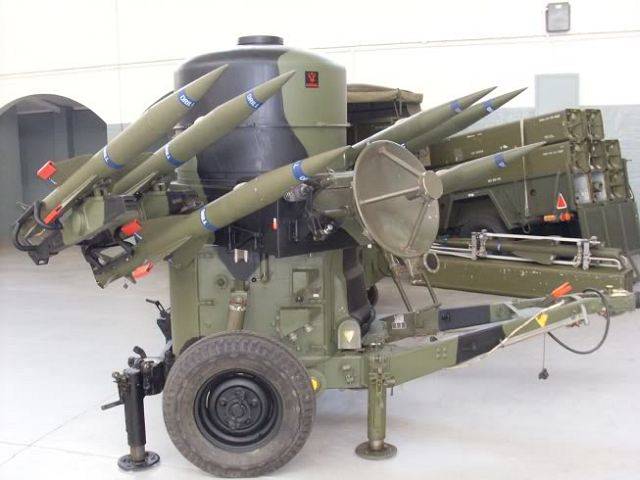
Launcher SAMs Rapier
The complex’s surveillance radar, combined with a launcher, is capable of detecting low-altitude targets at a distance of more than 15 km. Guidance missiles is carried out using radio commands, which after capturing the target is fully automated. The operator only keeps the air target in the field of view of the optical device, while the infrared direction finder accompanies the missile launcher along the tracer, and the counting and resolving device generates guidance commands for the anti-aircraft missile. SAM Rapier can be used autonomously. Typically, the complexes are reduced to batteries, each of which includes: battery management, two firing platoons and a repair section. The first serial modification of the complex could hit air targets at ranges from 500 to 7000 m, in a range of heights of 15-3000 m.
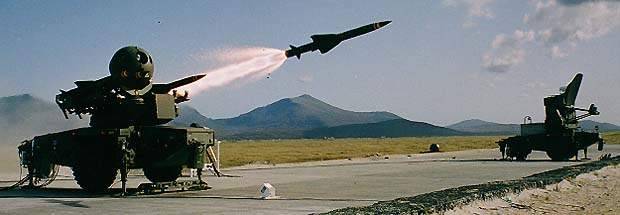
In the second half of the 1990s, mass production of the radically improved modification of the Rapier-2000 began. Thanks to the use of more effective missiles Mk.2, with an increased firing range of up to 8000 m, non-contact infrared fuses, and new optoelectronic guidance stations and tracking radars, the characteristics of the complex have increased significantly. In addition, the number of missiles on launchers doubled - up to eight units. The Rapira-2000 complex was equipped with Dagger radar. It is capable of simultaneously detecting and tracking up to 75 targets. A computer coupled to a radar allows you to distribute targets and fire at them depending on the degree of danger. Guidance missiles to the target radar Blindfire-2000. In a difficult jamming environment or with the threat of anti-radar missile defense systems, an optoelectronic station comes into play. It includes a thermal imager and a highly sensitive TV camera. The optoelectronic station accompanies the rocket along the tracer and gives the coordinates to the calculator. Using radar tracking and optical means, simultaneous firing of two air targets is possible.
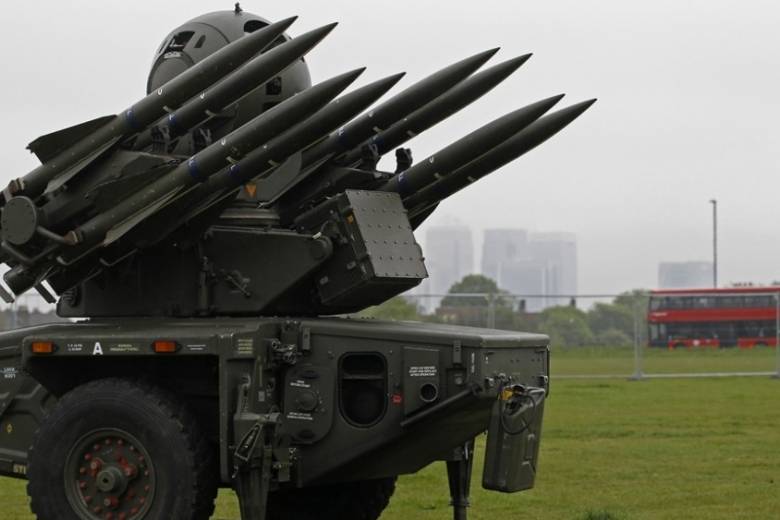
SAM launcher Rapier-2000
After the Turkish company Roketsan received a license to manufacture the Rapier-2000 air defense systems, 86 complexes were built in Turkey. The Mk.2A missiles and a number of electronic components were supplied by BAE Systems. Radars were provided by Alenia Marconi Systems.
At the moment, the Rapier 2000 air defense system is permanently covered by five large air bases located in the southern and western parts of Turkey. Usually in the vicinity of the air base deployed from 2 to 6 complexes. The Incirlik Air Base is best protected, where American warplanes are permanently located and B61 thermonuclear bombs are stored.
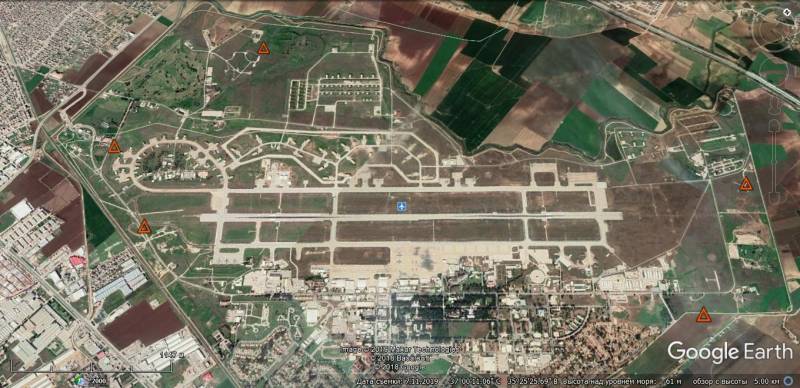
Layout of the positions of the Rapier-2000 air defense system in the vicinity of the Incirlik air base
Currently, the Turkish leadership has embarked on a renewal of the national air defense system. The problem of replacing obsolete radars and anti-aircraft missile systems is solved by purchasing modern models abroad. In addition, Ankara is actively seeking to establish licensed production of advanced radar facilities on its territory, which gives access to technology. At the same time, the creation of their own radar and air defense systems, which have already begun to enter the troops, is ongoing.
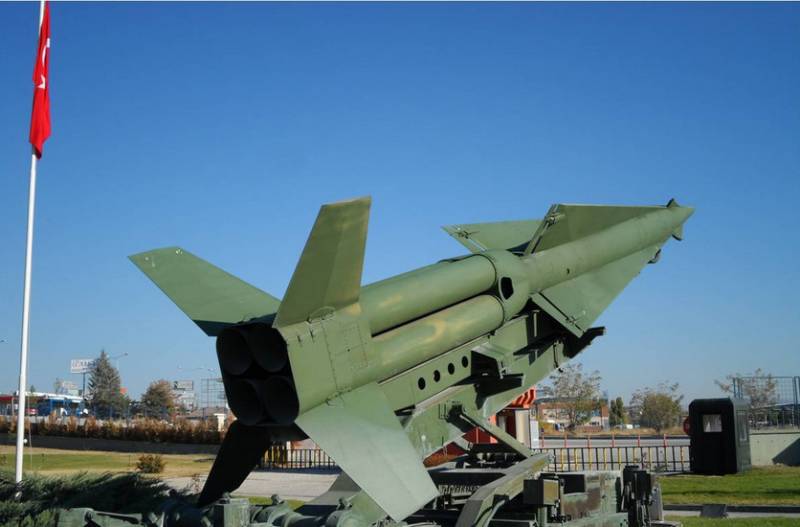
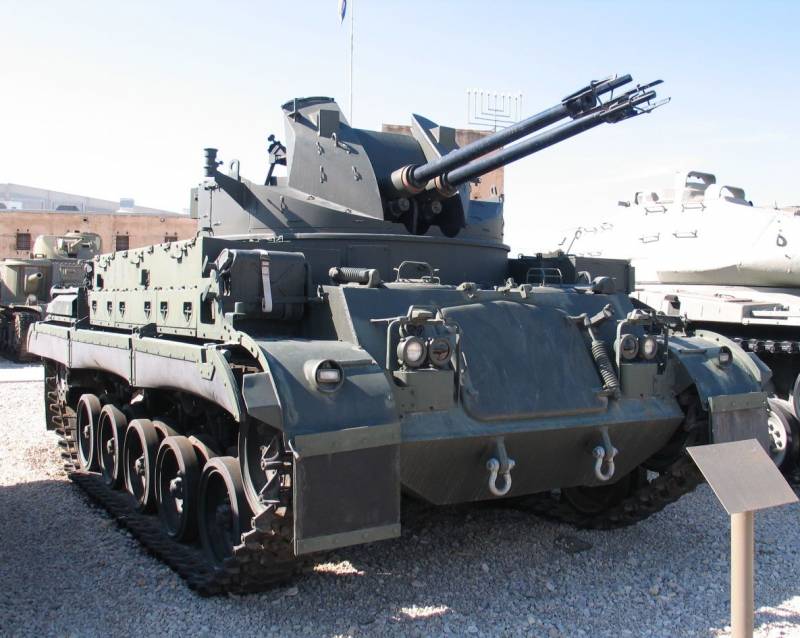
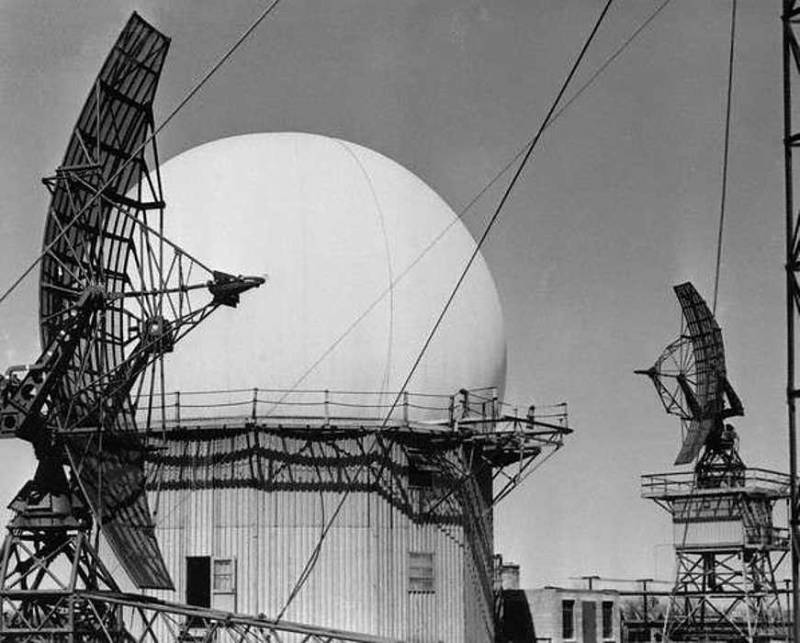
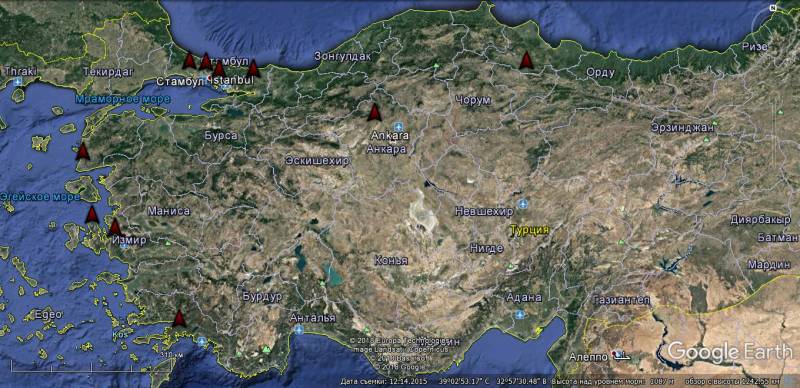
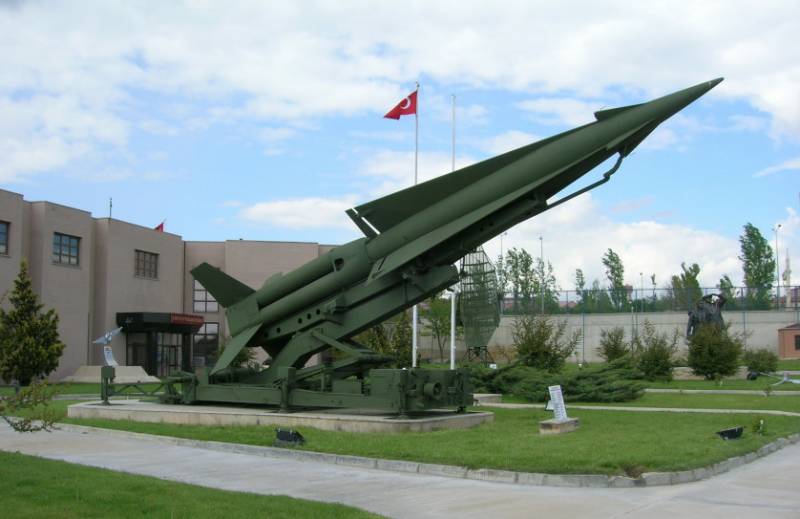
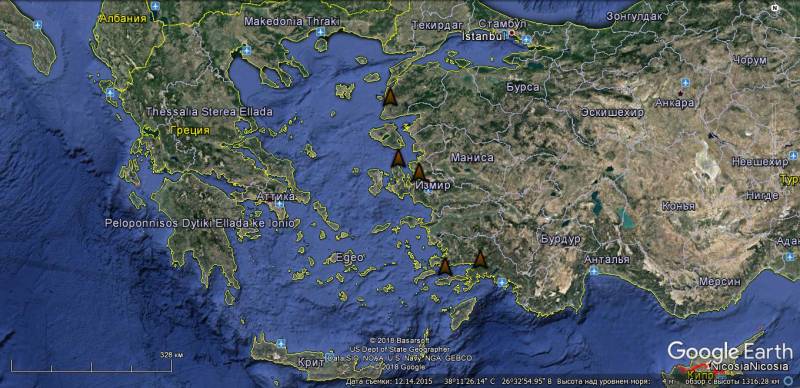
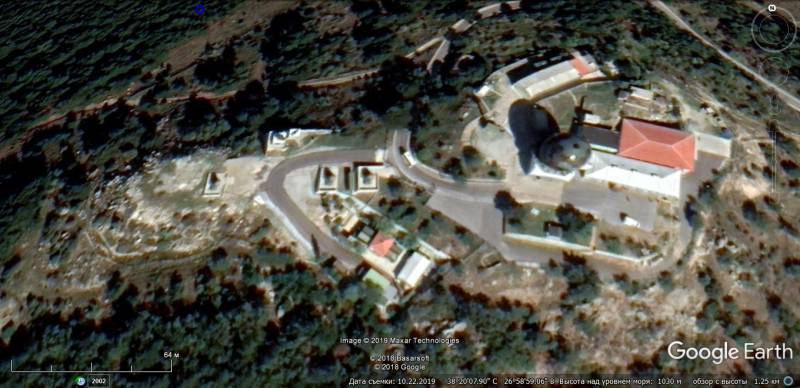
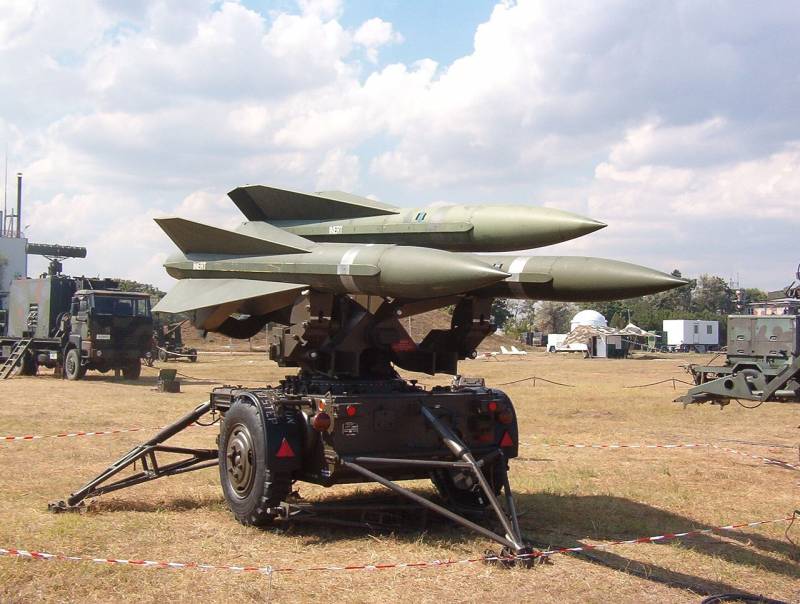
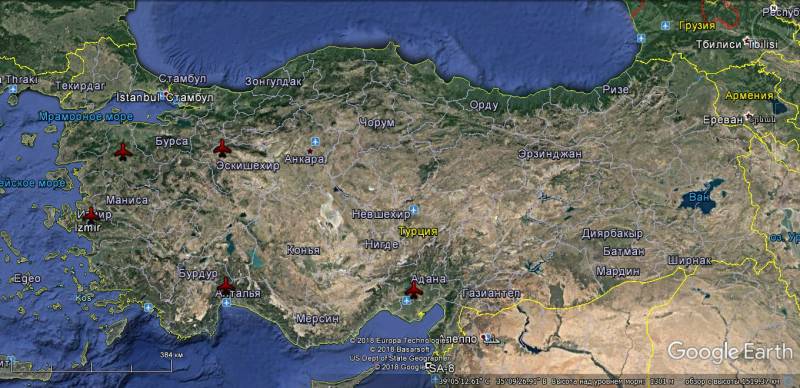
Information